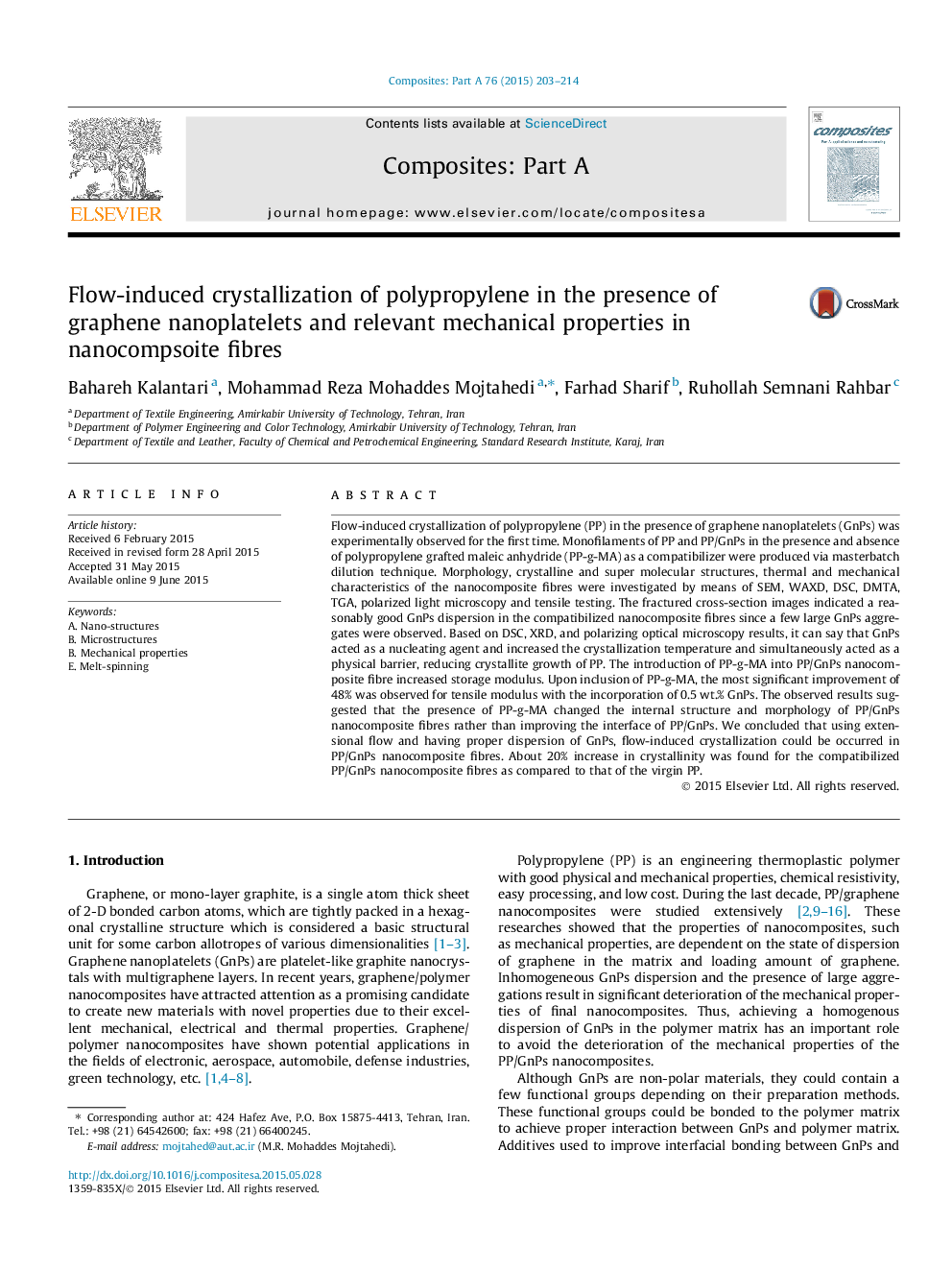| Article ID | Journal | Published Year | Pages | File Type |
|---|---|---|---|---|
| 7891656 | Composites Part A: Applied Science and Manufacturing | 2015 | 12 Pages |
Abstract
Flow-induced crystallization of polypropylene (PP) in the presence of graphene nanoplatelets (GnPs) was experimentally observed for the first time. Monofilaments of PP and PP/GnPs in the presence and absence of polypropylene grafted maleic anhydride (PP-g-MA) as a compatibilizer were produced via masterbatch dilution technique. Morphology, crystalline and super molecular structures, thermal and mechanical characteristics of the nanocomposite fibres were investigated by means of SEM, WAXD, DSC, DMTA, TGA, polarized light microscopy and tensile testing. The fractured cross-section images indicated a reasonably good GnPs dispersion in the compatibilized nanocomposite fibres since a few large GnPs aggregates were observed. Based on DSC, XRD, and polarizing optical microscopy results, it can say that GnPs acted as a nucleating agent and increased the crystallization temperature and simultaneously acted as a physical barrier, reducing crystallite growth of PP. The introduction of PP-g-MA into PP/GnPs nanocomposite fibre increased storage modulus. Upon inclusion of PP-g-MA, the most significant improvement of 48% was observed for tensile modulus with the incorporation of 0.5Â wt.% GnPs. The observed results suggested that the presence of PP-g-MA changed the internal structure and morphology of PP/GnPs nanocomposite fibres rather than improving the interface of PP/GnPs. We concluded that using extensional flow and having proper dispersion of GnPs, flow-induced crystallization could be occurred in PP/GnPs nanocomposite fibres. About 20% increase in crystallinity was found for the compatibilized PP/GnPs nanocomposite fibres as compared to that of the virgin PP.
Related Topics
Physical Sciences and Engineering
Materials Science
Ceramics and Composites
Authors
Bahareh Kalantari, Mohammad Reza Mohaddes Mojtahedi, Farhad Sharif, Ruhollah Semnani Rahbar,
